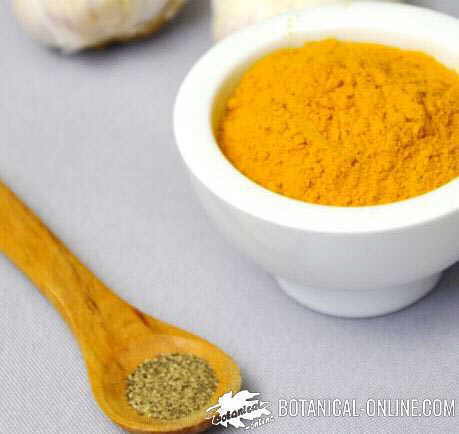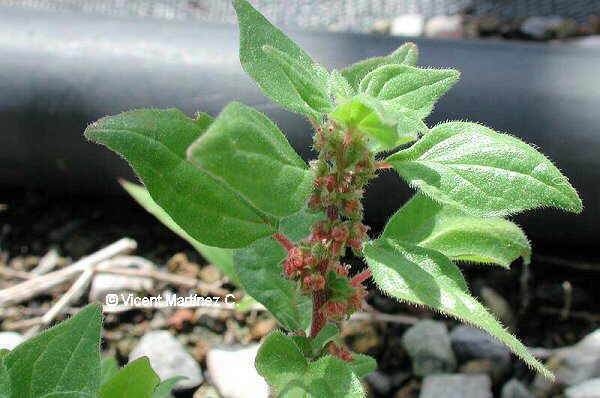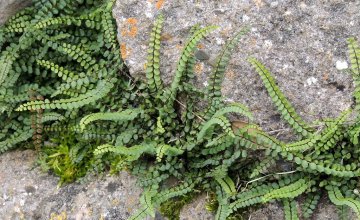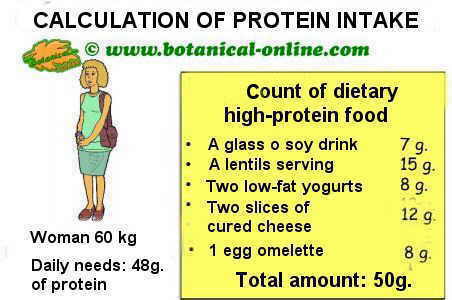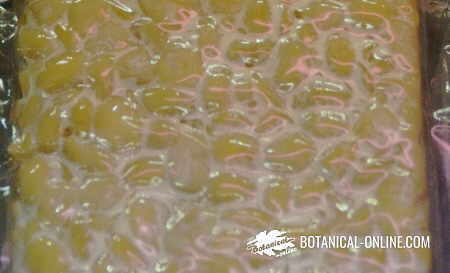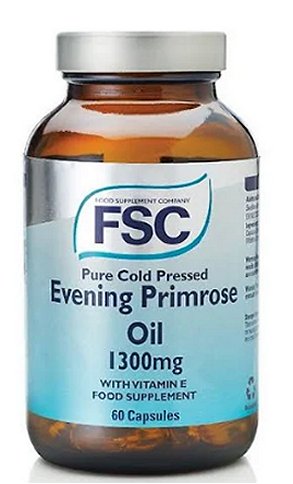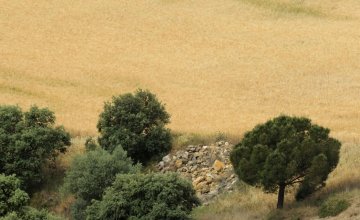Contents
Edible legumes in the world
HOW MANY LEGUMES ARE THERE?
The most important pulses worldwide
There are a lot of leguminous plants (Papilionaceae) which produce edible beans. The most important are the following. (Click on each if you want to see the full details)
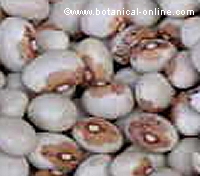
Dry beans
- Beans (Phaseolus spp) are vegetables that can be eaten whole when tender (green beans) and only the seeds (dry beans) when they are ripe and the outer pod is dried.
Green beans are low in calories and high in fiber, potassium and beta carotene. They help lower cholesterol, prevent constipation and obesity.
Dried beans are rich in protein, carbohydrates and fiber, although low in fat. They provide great energy. Because they contain a lot of folic acid, they are especially recommended for pregnant women
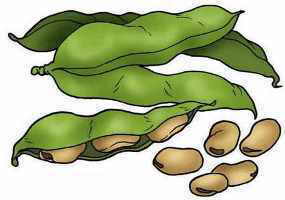
Fava beans drawing
- Fava beans: (Vicia fava)They can be eaten when they are tender, in which the immature seed pods are also edible, although generally we only tend to cook the seeds.
Beans are rich in vegetable protein and fiber, while containing fewer carbohydrates than other vegetables.
We must highlight their magnesium, iron calcium and folic acid content. Broad beans are also rich in antioxidants.
They contain L-DOPA which is very interesting in the early stages of Alzheimer’s and Parkinson’s.
Suitable in any healthy diet, obesity, diabetes and menopause.
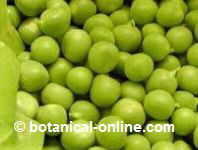
Green peas
- Peas (Pisum sativum) can be eaten when they are green, in which case they are considered a vegetable or when dry. In the first case, we can also profit the tender edible sheath.
Like other legumes, they are very interesting to keep the body satisfied between meals thanks to complex carbohydrates and fiber wealth that pours glucose gradually into the bloodstream.
They contain very little fat, lots of vitamin B and are especially rich in potassium and magnesium.
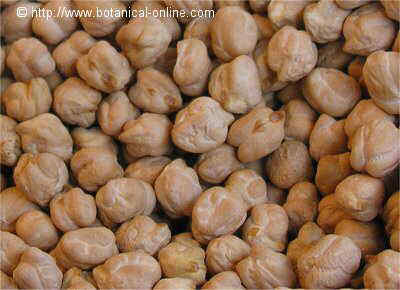
Chickpeas
- Chickpeas (Cicer arietinum) They are eaten cooked when they are dry, although they can also be eaten eat dry toasted.
They are particularly rich in protein and carbohydrate.
Because they contain lecithin, folic acid and manganese, they help prevent cardiovascular disease.
Recommended for cholesterol, osteoporosis, fibromyalgia and rheumatism.
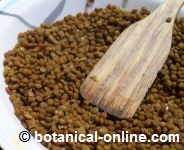
Lentils
- Lentils (Lens culinaris) Lentils seeds are eaten when dry, once they are cooked.
They are rich in minerals like zinc, with aphrodisiac power, and magnesium, which is very suitable for the bones. They also contain potassium and phosphorus.
For its wealth of vitamin B, they protect the nervous system.
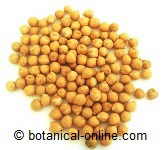
Soy bean
- Soybean (Glycine max) Mature soybean seeds are eaten cooked. When these seeds are tender, they can be germinated. Germinated soybeans are widely used in food.
Many people drink “Soy milk” as an alternative to animal milk.
From soy, many derivatives are obtained, such as tofu, tempeh. All them very rich in proteins, so they are used as meat substitutes.
From soy a phospholipid called lecithin is also obtained, whose protective properties of the circulatory system have been very praised
Soy is a legume that contains the most complete proteins. In addition, it also has a lot of calcium and beneficial phytochemicals such as isoflavones that protect against some cancers and other phytoestrogens, such as genistein and daidzein, which are very useful for women during menopause.
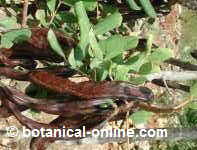
Carob beans
- Carob beans: Carob tree (Ceratonia siliqua)is a tree whose fruit, carob beans, are black when ripe.
Carob tree legumes are primarily used in the composition of animal feed and food industry, mainly as a thickener. However, their use in home cooking as a substitute for cocoa is growing, especially in vegetarian cooking.
Carob pods contain many proteins and they are especially rich in fat and carbohydrates.
Carob flour is especially suitable for feeding athletes or people doing jobs that require a high caloric expenditure. It is also very suitable for children, especially carob flour cream.
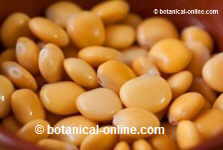
Lupins
- Lupin (Lupinus albus) lupine seeds, also called lupines are used hydrated and salted.
They are very rich in potassium, calcium and phosphorus.
Low in fat, but high in protein, fiber and carbohydrates.
They protect the organ of vision and are very useful for controlling diabetes and lowering cholesterol.
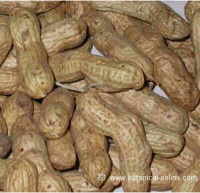
Peanuts
- Peanuts: (Arachis hypogaea) Although from a food point of view, peanuts are included within the nuts.
Peanuts are actually legumes. Peanuts pods are rich in fat, especially omega 3 and omega 6, and fiber.
They contain many proteins, especially peanut butter.
Because of amino acids arginine and antioxidant resveratrol, they are very good to protect cardiovascular health.
Some people are allergic to peanuts, so this food should therefore be tested in small amount before starting eating them.
![]() More information on legumes.
More information on legumes.


